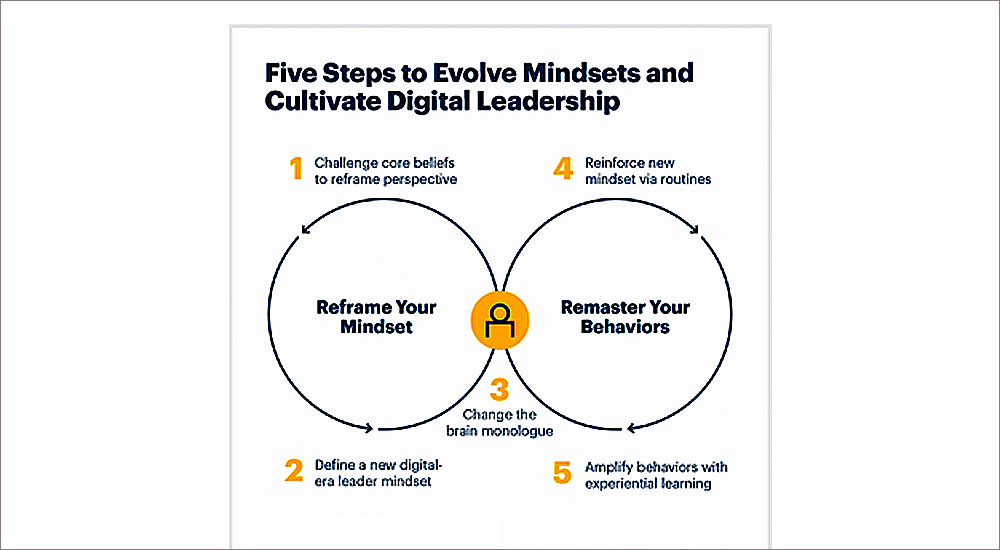Why CIO mindsets are not suitable for digital biz

It is an accepted fact at your company that your customers prefer to deal with the organisation in person, and that human interaction is critical to the business. But what if the opposite is true? What if customers prefer digital interactions and the first priority should be a customer experience that meets customer needs?
A new take on an old mindset presents a world of potential business opportunities in the context of the digital world. CIOs cannot deliver needed digital capabilities without adapting their thinking to new market realities. Continuously changing digital markets will require continuously adapting leadership. Like any human, CIOs struggle giving up leadership mindsets that served them well in the past. But CIOs cannot deliver needed digital capabilities without adapting their thinking to new market realities.
To move the company toward a new mindset, CIOs must understand and evangelise digital dexterity. A recent Gartner study found that employees are 2.6 times more likely to have high digital dexterity if their leader sets the tone and role-models the behavior, yet only 17% of organisations have leaders who do so consistently.
Gartner provides five steps that CIOs can follow to cultivate the digital dexterity needed to become effective digital business leaders. The five steps form two mutually reinforcing loops:
Loop #1 Reframing mindset enables CIOs to increase awareness of how their existing mindset must evolve, given a new leadership context, and lays the groundwork for sustainable change.
Loop #2 Remastering behaviors reinforces the new thinking via routines, culture hacks and new practices that sustain digital dexterity leadership well-suited to new market realities.
Remember this is not a one-time, check-the-box process — it will be iterative and continuous.

Step #1 Challenge core beliefs and reframe perspectives
Many leaders have deeply ingrained core beliefs about their organisations. But these core beliefs can create blind spots. Challenge those beliefs to make sure they still stand in the current business climate. CIOs who do not do this run the risk of maintaining the status quo to the detriment of progress.
Conduct a Challenge What You Know workshop and flip each core belief to the opposite. For example, our customers want to own the product and will buy and upgrade via a transactional model, becomes our customers want the product’s benefits and will embrace a subscription as a service model.
Identify how and when the new belief could work, check this against competitors’ actions and use this exercise to figure out which core beliefs can be modified or dropped.
Step #2 Define your new digital-era leader mindset
Digital leaders have to have the right mindset for today’s context.
Successful digital leaders have six traits:
- 1 Thrive despite uncertainty
- 2 Quest for breakthrough business outcomes
- 3 Exploit new digital-era competitive levers
- 4 Start, experiment, learn and iterate
- 5 Cultivate creativity and a culture of innovation
- 6 Attract top-notch digital dexterity talent
Rate yourself on a scale of 1-5, with 1 as the skill is irrelevant and 5 as it is a core mindset and focus on the skills you ranked as 2 or 4.
Step #3 Change your brain monologue
Once new the mindsets have been identified, it is time to internalise them. Throughout this process, you will often hear two voices in your head, the old and new mindsets in conflict. For example, one may say, let us move forward despite uncertainty, and then continue or pivot based on what we learn. The other will say, let us study it and wait until we are certain we can do this. It is critical to change that brain monologue.
Try scheduling 15 minutes on your calendar to assess where you used the new mindset versus the old one. Take the time to really think and acknowledge choices to avoid reverting back, and ask trusted coworkers to help keep you on track.
Step #4 Reinforce the new mindset via routines
To ensure your new mindset sticks, create small, achievable routines or culture hacks to reinforce them. For example, to further ingrain quest for breakthrough business outcome, set aside 30 minutes each Friday to review the week. Ask yourself if you were thinking safe next steps or bold leaps. Once a month, visit a new startup or different industry using different business models and consider how you could use them in your own organisation.
Step #5 Amplify behaviors with experiential learning
A development program should include 70% experiential learning, 20% mentoring or coaching, and 10% formal education. The best way to ingrain a new mindset is by dedicating time and resources to action. Experiential learning can be used to strengthen a specific trait. For example, for cultivating creativity and innovation, consider hosting hacking events or touring companies that are known for those traits.
Key takeaways
- To move the company toward a new mindset, CIOs must understand and evangelise digital dexterity.
- Continuously changing digital markets will require continuously adapting leadership.
- CIOs struggle giving up leadership mindsets that served them well in the past, similar to any other human.
- CIOs cannot deliver digital capabilities without adapting their thinking to new market realities.
- Many leaders have deeply ingrained core beliefs about their organisations.
- Core beliefs can create blind spots.
- Challenge core beliefs to make sure they still stand in the current business climate.
Gartner’s Graham Waller, explains CIOs will need to follow a planned programme of challenging and rebuilding mindsets to fit into digital businesses.





